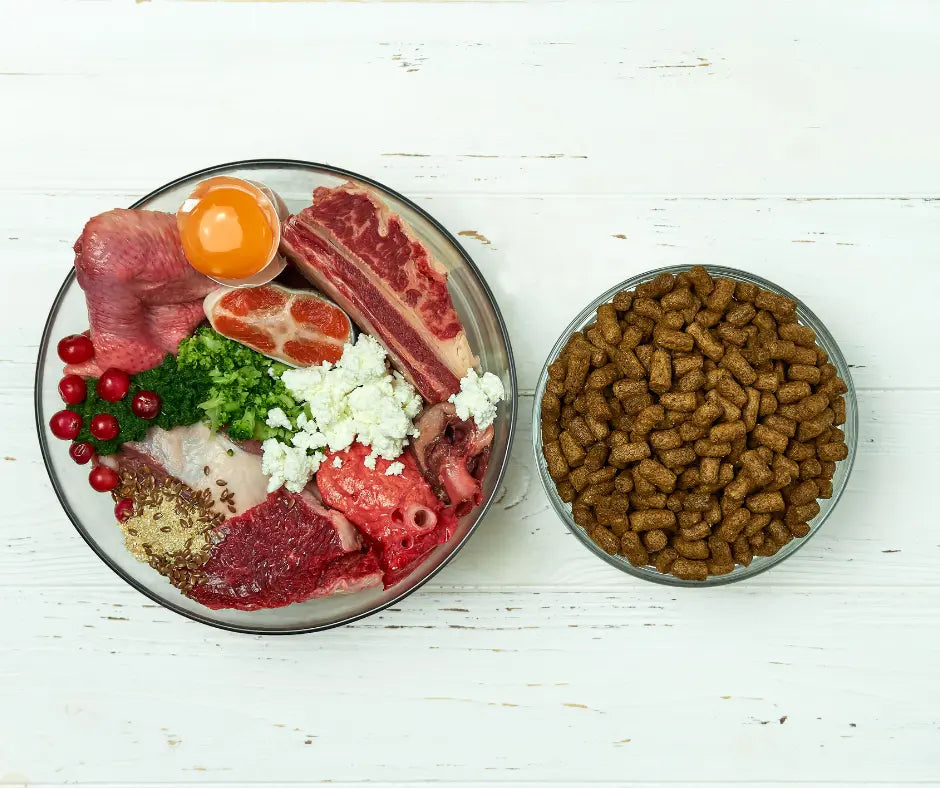ISCRIVITI PER NON PERDERTI AGGIORNAMENTI E NOVITÀ!
Dog food: instructions for mouth-watering meals

Among the fundamental choices when adopting a dog there is certainly that of deciding what type of food to provide to the new friend.
The choice is mainly between:
-homemade nutrition
-industrial food
Homemade food
Homemade food is chosen by those owners who decide to prepare their puppy's meals entirely. It is a choice that involves a great commitment both in terms of time and study of nutrition. It is, in fact, important to carefully analyze which are the most complete meals you can provide to your puppy, do some research and ask your vet for advice, so as not to administer a diet poor in nutrients necessary for your dog's daily needs or an excessive dose, which can lead to weight imbalances.
Equally important is making sure you can dedicate the necessary time to preparing food for your puppy every day.
Industrial food
By industrial nutrition, we mean the choice to give your dog commercial products. Industrial food is certainly a very convenient choice for owners and allows, by selecting quality products, to provide all the necessary nutrients to their puppy.
First of all, the main distinction to take into consideration when purchasing dog food on the market is between:
- Complete food: product capable of providing the nutrients necessary for daily needs.
- Complementary food: product not sufficient individually to satisfy the necessary daily ration. It is, therefore, to be used in combination with other products.
The types of food you can offer your puppy are labeled based on the percentage of water contained inside:
- Dry food: contains less than 14% water.
- Semi-moist food: contains between 14% and 34% water.
- Wet food: contains more than 34% water.
But are we sure we know what's inside the products we give to our four-legged friends? Let's not be influenced by price and advertising.
When you choose to provide this type of food to your dog, it is essential to consult the nutritional values of the product, indicated on the label on the back of the package, in which the individual raw materials are listed in decreasing quantitative order. It is essential to choose products that have animal proteins at the top, the main source of canine nutrition, and equally important is that these proteins are specified.
Ingredients of animal origin are divided into three main categories:
- Dehydrated meat or fish: the ingredient does not contain water from the start, there is no loss of the product in the finished food. It is, therefore, to be considered one of the best choices.
- Fresh meat or fish. It refers to a product that was inserted fresh when the feed was created, but is no longer fresh in the finished food, in which the meat is cooked, in the case of wet food, or dried in the case of kibble. This means that the water is eliminated during cooking.
- Fish or meat meal. The flour is rich in animal proteins, but animal elements such as bones, bones and feathers are also included. It can guarantee a supply of calcium, but not proteins or fats. Animal flours tend to lower the quality of the product and are therefore not a preferred choice.
This month, among the best products we recommend N&D Ocean with cod, pumpkin and orange, for medium and large dogs.
Another element to be carefully examined are the wordings reported, the way in which the materials are expressed, in fact, they are not a detail, but on the basis of current regulations, each definition indicates a precise percentage of the product contained. First of all, when examining the list of ingredients, the wording "meat of..." is preferable to the wording "meat and derivatives", which does not specify the type of meat contained.
These are some of the words you might find in the list of ingredients of your four-legged friends:
- “Beef flavored food” refers to an amount of meat less than 4%
- "Beef food" indicates that the meat content is not less than 4%
- “Beef-rich food” means 14% to 25%
- "Beef" the amount of beef is more than 26%
- "All beef" the indicated ingredient must be 100% present
You will find further information on how to read labels in our next article, so continue to follow us and stay updated.
So be very careful, arm yourself with a magnifying glass and study the labels carefully to find the best product for your furry friend and avoid making mistakes!





